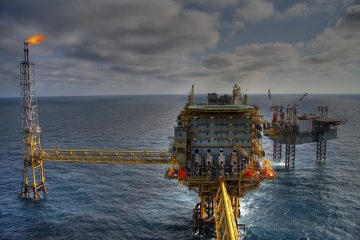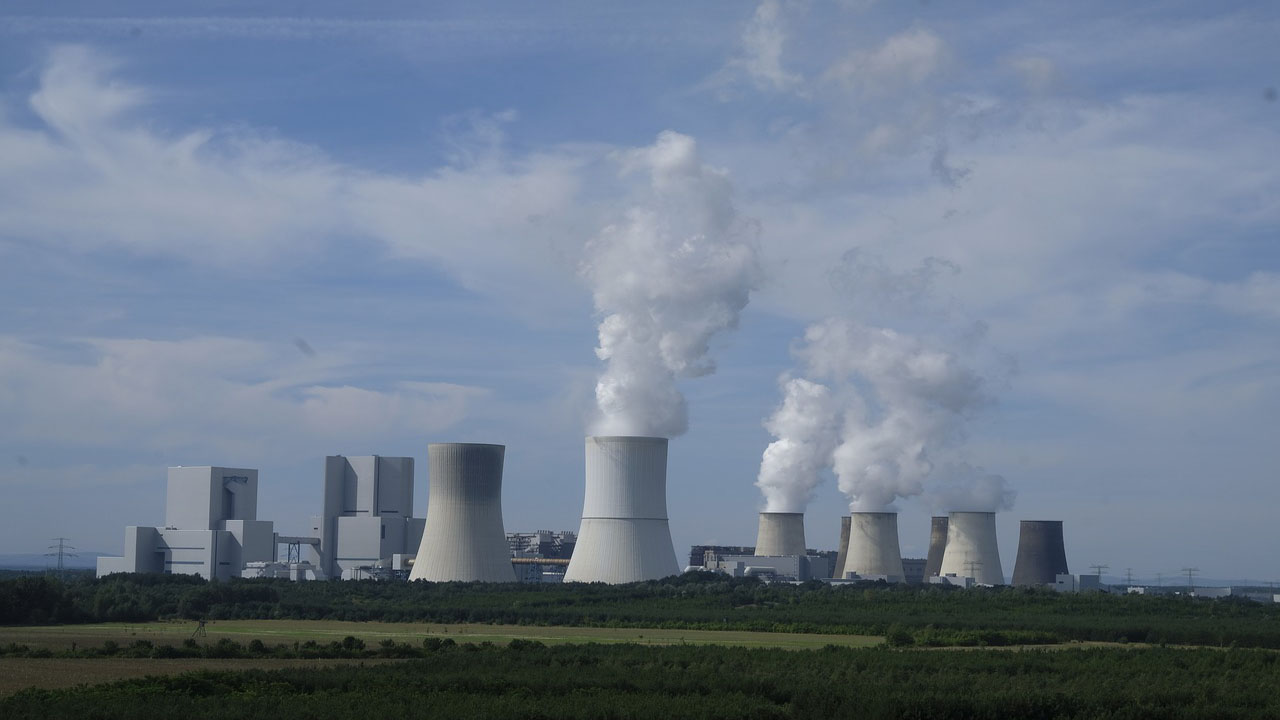Lighting up Africa is ‘a marathon not a sprint’
Four years after the launch of former President Barack Obama’s 2013 attempt to bring light to the proverbial dark continent, his legacy Power Africa initiative is on track to deliver an initial $7 billion in US government-backed loans and grants for new power projects within the five-year target – confounding its sceptics – and helping ease Africa’s large and persistent power deficit.
The US government’s initial commitment has succeeded in mobilising more than $54 billion in additional pledges from multilateral and bilateral lenders, including more than $40 billion in private sector commitments, to invest in new power generation, transmission and distribution capacity across the region where dilapidated, dysfunctional and mismanaged energy sectors have long acted as a drag on economic growth.
According to the 2017 Power Africa Report, the initiative has overseen the financial closure of 80 separate power transactions valued at $14.5 billion, which will generate some 7,200 MW once operational. Power Africa is now among the largest public-private partnerships for development in history, creating export opportunities for US firm currently valued in excess of $500 million.
Critics had earlier complained that the Power Africa initiative had reached its halfway stage without making any significant progress on its pledge to double access of electricity to initially six partner countries in sub-Saharan Africa – Ethiopia, Ghana, Kenya, Liberia, Nigeria and Tanzania – Some of those critics had openly mocked the programme for adding less than 400 MW to the region’s woefully inadequate generating capacity.
![]()
Power Africa had admittedly got off to a very slow start. Twelve US government departments and agencies – led by the US Agency for International Development (USAID) – working with US embassy teams, host governments and private sector partners, spent much of the first two years identifying project priorities, and addressing policy, legal and regulatory constraints that had inhibited private sector investment into the African energy sector for decades.
While such laborious and painstaking work was essential to ensure that Power Africa was built on solid foundations, it nonetheless helped to foster the appearance that little or no progress was being made. Moreover, of the $5 billion pledged by the US Export-Import Bank towards the initiative in loans, guarantees and insurance, only $132 million had been allocated before the bank’s charter expired in June 2015.
Power Africa had admittedly got off to a very slow start
Several billion dollars’ worth of Power Africa projects were already in the pipeline but were unable to proceed without a decision by the Republican-controlled Congress to renew the bank’s charter. The sustained assault on the bank by Tea Party conservatives since 2014 for using tax-payer money to support the business deals of large US corporations such as General Electric, Bechtel, Caterpillar, and Boeing, appeared to put the Power Africa initiative in jeopardy.
Charter renewal finally came in December 2015, enabling Power Africa to begin making up for much lost ground, although there is still a widespread failure to fully appreciate the extremely long lead times required to bring new power generation capacity on line – three to five years for small and medium-scale projects, and five to ten years for large-scale projects – so expectations for a quick fix for Africa’s entrenched energy poverty were and remain unrealistic.
Nevertheless, the outlook for Power Africa has since improved markedly. President Obama signed the 2015 Electrify Africa Act into law in February, effectively enshrining Power Africa’s objective of doubling access to electricity in legislation, while at the same time sending out an unambiguous signal to Africa and the rest of the international community that expanding electricity access in the world’s poorest continent is now a long-term US foreign policy priority.
Nevertheless, the outlook for Power Africa has since improved markedly
The 2016 Power Africa Roadmap lays out a strategy for doubling access to power across the region, as well as boosting installed generating capacity by 30,000 MW by 2030 – which if implemented would raise existing installed generation capacity by around one-third.
According to Stephen Larkin, CEO of African New Energies (ANE), “increasing the continent’s generation capacity by 30,000 MW represents at least 130 terra watt hours a year, which will boost Africa’s gross GDP by $400 billion.” He added: “Considering that this will make money for America, this is exactly the kind of enlightened foreign assistance Africa most needs.”
ANE, which is prospecting for hydrocarbons in Namibia, hopes to secure funding from the Power Africa initiative to help implement its natural gas-to-solar strategy in a country where more than 65% of the population do not have access to electricity, although it will first have to prove a sufficient resource base, and secure a power purchase agreement with NamPower, Namibia’s state-owned generator.
Increasing the continent’s generation capacity by 30,000 MW represents at least 130 terra watt hours a year, which will boost Africa’s gross GDP by $400 billion.
Power Africa is currently monitoring some 500 power projects that have the potential to add a further 60,000 MW of generating capacity across the continent, although because of the complexities and hazards associated with greenfield power projects, only between 18,000 MW and 21,000 MW are likely to materialise.
To compensate for the anticipated shortfall, Power Africa has increased the number of its in-country experts or transactional advisers to more than 40, who are currently scouring the continent to identify 9,000 MW to 12,000 MW of additional power generation projects to make up the 30,000 MW target.
Power Africa now has more than 130 private sector partners helping to maximise its impact on the continent, and has partnered with the World Bank, the African Development Bank, the European Union, the governments of the United Kingdom, Sweden, Norway, Canada and Japan, in an attempt to maximise and amplify its impact across the African continent.
President George Bush’s Millennium Challenge Corporation (MCC), designed to create an incentive for good governance and now part of the Power Africa initiative, currently has five power-focused compacts in sub-Saharan Africa with Malawi, Benin, Sierra Leone, Liberia and Ghana, aimed at reviving each country’s crumbling power sector.

Africa compared to the rest of the world
In Ghana, the MCC plans to invest up to $498 million over the next five years overhauling the management of the loss-making state-owned Electricity Company of Ghana, and bring an end to the 12 hour-long blackouts that have contributed to the country’s faltering economic growth.
Financial support is being provided to a bewildering array of power projects from the 1,000 MW Corbetti geothermal power project in Ethiopia, to nearly 500 MW of new wind power projects in Kenya – including $250 million form the US Overseas Private Investment Corporation for the much-delayed 310 MW Lake Turkana Wind Power project.
Other projects that have secured funding include the $50 million in financial support for the Standard Charted Bank-sponsored 450 MW gas-fired Azura power plant in Nigeria’s Edo State, the six new solar, gas-fired and geothermal power plants being planned in Kenya, and these are only a handful of the projects underway across the continent.
Some critics have said that Power Africa should have put a greater focus on the rapidly expanding off-grid, roof top, solar power panel sector, which can put electricity into people’s homes far faster and cheaper than any grid-based systems. Power Africa was behind the curve in the early days of the initiative, but has since moved quickly to make up lost ground.
Under the Power Africa Off-Grid Challenge, a public private partnership between General Electric, USAID and the US African Development Fund, support for African companies in this sector has now been stepped up, with 50 grants of $100,000 across nine countries – with more in the pipeline.
The scale of the challenge is huge, but Power Africa’s contribution to resolving it is considerable, and has every prospect of banishing energy poverty from the continent in the medium to long-term.
The face of power provision in Africa is changing so rapidly that even power companies are struggling to keep up with it. In 2016, the $816 million Rockefeller Brothers Fund, the family foundation built on the riches of John D. Rockefeller’s Standard Oil Company, announced its intention to invest in a $175.5 million wind and solar programme in Africa, marking its biggest move into renewables since announcing plans to stop investing in fossil fuels in 2014.
Its $10 million investment will help finance Lekela Power, a joint venture between Ireland’s Mainstream Renewable Power, and British private equity firm Actis – both Power Africa partners – which are planning multiple wind and solar projects in South Africa, Egypt, Ghana and Senegal.
The World Bank estimates that there are 630 million people in sub-Saharan Africa who have no access to electricity – around 70% of the population. It has also estimated that sub-Saharan Africa would need an investment of $40 billion dollars a year – every year – between 2010 and 2020, to bring power generation in line with other emerging market regions.
The scale of the challenge is huge, but Power Africa’s contribution to resolving it is considerable, and has every prospect of banishing energy poverty from the continent in the medium to long-term. That would be an enviable legacy for the US, and the President who set it in motion.


0 Comments